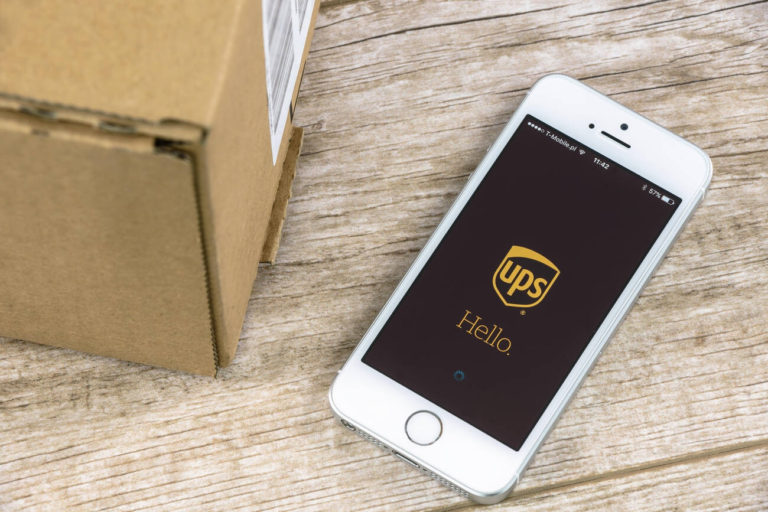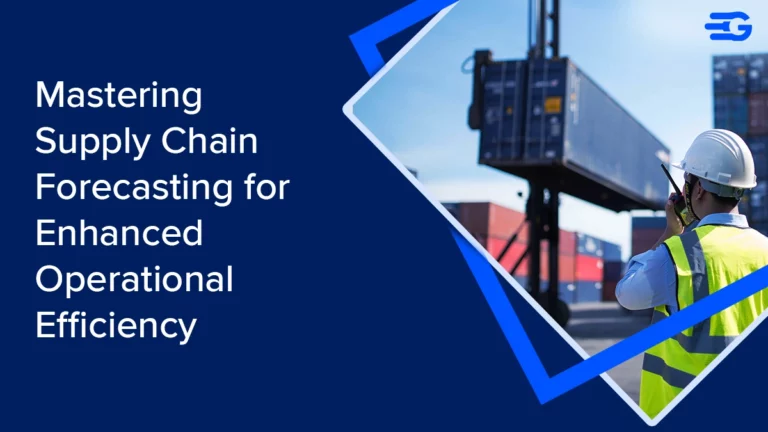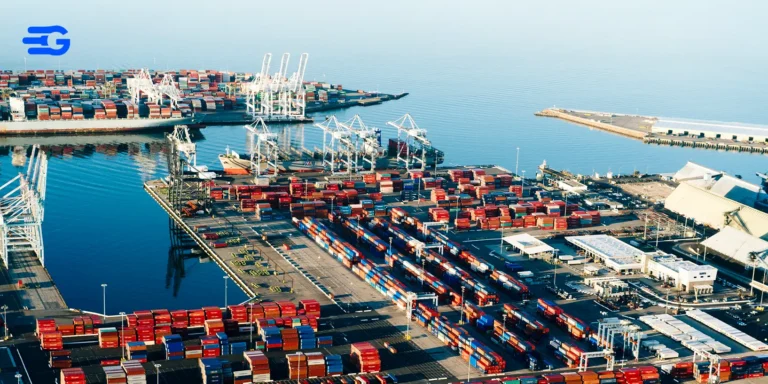Best Real-Time Tracking Tools for Multi-Modal Shipments: Complete Guide [2025]
Multi-modal shipment visibility often breaks at the transitions as shipments move across multiple transport modes. Ports, airports, railyards, and warehouses operate on different systems, making it difficult to track the same container through every leg. Manual tracking across carrier websites or spreadsheets only adds to the delays, with updates arriving too late to be useful.
What’s needed isn’t more data. You need better timing, context, and consistency. Real-time visibility works when tracking systems can pull updates across modes, flag exceptions early, and integrate with your workflows. If you’ve got 14 minutes to spare, this blog unpacks what to look for and which cargo tracking softwares actually helps. Let’s dive in.
Why Multi-Modal Logistics Is a Visibility Nightmare
When shipments move across ocean, air, rail, and trucking, visibility becomes chaos. You’re not dealing with one handoff…you’re juggling five, sometimes more. Each leg speaks a different “tech language.”
Ocean carriers might update once every 24 hours, truckers run GPS with 15-second intervals, and air cargo uses airport scans.
The result? No clean, unified timeline. Just scattered data points, delayed updates, and huge visibility gaps.
That’s what kills execution. Most businesses aren’t missing tools. They’re missing real-time freight monitoring systems that can stitch all of this into a single, living view.
Here’s what makes multi-modal shipment visibility such a pain:
- Data silos across modes → Ocean freight data sits with one platform, truck GPS sits with another. Nothing talks to each other. You get partial pictures, not end-to-end tracking.
- Low update frequency (especially in ocean/rail) → Vessels often update position once every 6–12 hours. Delays go unnoticed until it’s too late to respond. Real-time tracking? Nowhere in sight.
- Inconsistent milestone definitions → “Delivered” means offloaded at port for one vendor. For another, it’s the final delivery. Messes up downstream planning.
- No ownership during mode handoffs → Nobody is accountable when cargo moves from ship to rail or truck to warehouse. That transition window is where shipments get delayed or misplaced.
- Poor exception handling → If something goes wrong, you don’t know what, where, or why. Just that your shipment’s stuck. No alerts. No insights. No context.
As we can see, multi-modal logistics expose the cracks in traditional cargo tracking software.
And unless you’ve got a system built for real-time, cross-mode visibility, you’re working off assumptions, not facts. The U.S. Department of Transportation has already committed $5.1 billion toward multimodal freight projects for 2025–2026. That kind of funding signals how serious the shift is toward improving cross-mode infrastructure and coordination.
That’s where advanced freight monitoring systems step in, to turn chaos into clarity. Let’s now see how to pick the best system for your business.
What to Look for in a Real-Time Multi-Modal Tracking Tool
Here’s what to demand from any tool claiming to improve multi-modal shipment visibility.
- Carrier-Agnostic Data Integration
If your tool relies on specific carriers to push updates, it’ll fail the moment your cargo changes hands. The best freight monitoring systems pull data from everywhere like GPS, AIS (for vessels), rail feeds, airline tracking APIs, and normalize it into one view. This breaks silos and gives full-chain context.
- Live Location + Predictive ETAs
It’s not just where your cargo is. It’s where it’s expected to be next. Real-time tracking should combine GPS or sensor data with AI-powered ETA engines. Predictive ETAs account for weather, port congestion, and historical trends, giving you a more accurate delivery timeline. This is what separates “tracking” from true multi-modal shipment visibility.
- Geofencing and Event Triggers
You need alerts before problems get expensive. Geofencing lets you define zones like ports, warehouses, or customs points, and get notified when shipments enter or exit them. Combine that with triggers for delays, deviations, or extended dwell times, and your teams stop reacting late and start acting early.
- Seamless API & ERP Integration
Your cargo tracking software shouldn’t live in a silo. Look for platforms that offer flexible APIs, webhook support, and native ERP/TMS connectors. This lets you automate workflows, like notifying warehouse staff when a shipment is 8 hours out or delaying dock schedules if cargo is stuck at port.
- Exception Management + Root Cause Analysis
Visibility isn’t just about “where.” It’s about knowing what went wrong and why. Top freight monitoring systems offer a dashboard of exceptions with contextual data. Was it a port delay? missed transshipment? Customs holdup?
Bonus points if it tracks patterns across vendors and routes.
Best Real-Time Tracking Tools for Multi-Modal Shipments
When freight moves across multiple legs, the gaps show up fast. Some teams need full-blown enterprise integrations. Others just want clean visibility and alerts that actually help them act. Different tools solve different problems, some are built for scale, others for speed. Here’s how the top players compare and where each one fits in.
1. Project44
Project44 is made for large enterprises handling complex global shipments. It connects with thousands of carriers across ocean, air, rail, and road. You get live updates, predictive ETAs, and integrations with big ERPs like SAP.
It’s powerful but comes with heavy setup and higher costs. Works best if you have a dedicated team to manage it. For leaner teams, it can feel bulky and slower to implement..
2. FourKites
FourKites is strong in connecting shipments to facilities. You’ll find this valuable if your bottlenecks often happen during warehouse receiving, dock scheduling, or compliance workflows.
It shines in:
- Real-time alerts on dwell times and in-transit exceptions.
- Cold chain tracking with temperature compliance alerts.
- Last-mile sync between inbound trucks and facility slots.
It’s solid cargo tracking software. However, it’s most valuable only if you’re deep into network-wide coordination.
3. GoComet
If you’re not managing thousands of containers every week, GoComet quietly becomes the most practical tool in the list. It doesn’t try to do everything, but nails the core needs of multi-modal shipment visibility without heavy setup.
- Live tracking across ocean, air, and road.
- Delay prediction + exception alerts baked into the interface.
- Vendor scorecards (no manual follow-ups on missed SLAs).
- Built-in freight benchmarking for smarter procurement.
- Simple API integrations with ERPs and TMS tools.
GoComet AI-powered features fits when you need to move fast, stay informed, and avoid paying enterprise pricing for features you won’t use. According to ITS America, using AI in multimodal logistics could cut costs by up to 20%. Most mid-sized logistics teams that need clear data + actionable alerts, this is your default option.
In fact, GoComet’s visibility tools have already helped legacy companies shift from manual follow-ups to automated, insight-driven tracking. Real results show up in fewer delays and clearer decisions.
4. Vizion API
Vizion gives ocean tracking data through a clean API. No interface, no platform. Just raw container updates you can plug into your own system.
Good fit for dev-heavy teams building custom tools. But no multi-modal support and no built-in visibility. For most shippers, it’s too barebones compared to something like GoComet.
There’s no one-size-fits-all tool in this space. But if your goal is real-time updates, smart alerts, and faster decisions, GoComet hits the sweet spot for most non-enterprise logistics teams. It does what you need, skips what you don’t, and keeps your cargo tracking software lean and sharp. When visibility becomes usable, that’s when things actually move better.
GoComet’s Approach: Visibility That Converts to Action
Most tracking platforms stop at location updates. GoComet is built for teams that need more. More context, more early warnings, and more actionable insights.
It connects the dots across your entire shipment flow and cuts down the back-and-forth that usually slows logistics down.
- All-carrier coverage on one dashboard: No need to jump between shipping line websites. Track every shipment, from any carrier, in one place.
- Milestone-based tracking with performance insights: The system auto-captures real-time events and compares them to planned timelines. Helps you spot delays early and measure vendor performance.
- AIS-powered geofencing and pre-emptive alerts: Get notified about possible disruptions before the carrier even reports them. Avoid penalties from demurrage or detention.
- Inbox-ready updates: Automated shipment updates land directly in your inbox. No manual refreshes, no wasted time.
- Shareable tracking with customers: Let clients see real-time updates for their own shipments. Fewer calls, better trust.
- Built-in analytics dashboard: See which vendors underperform, where delays are happening most, and where savings are possible.
For logistics teams that want clarity without the extra layers, this is where real-time tracking becomes real-world control.
Multi-modal shipment visibility isn’t a nice-to-have anymore. With cargo moving across different modes, handoffs and blind spots have become major risks. The right freight monitoring system cuts through that noise, giving teams the live data and alerts they need to stay ahead of disruptions.
Whether you’re managing a few dozen containers or hundreds, the goal stays the same. Fewer surprises, faster responses, and better decisions. Tools like GoComet hit that balance by focusing on real-time tracking, early warnings, and clear insights without the overhead. Want to go deeper into how visibility tools shape logistics outcomes? Check out more on GoComet’s visibility solutions.





